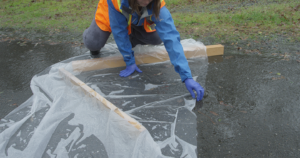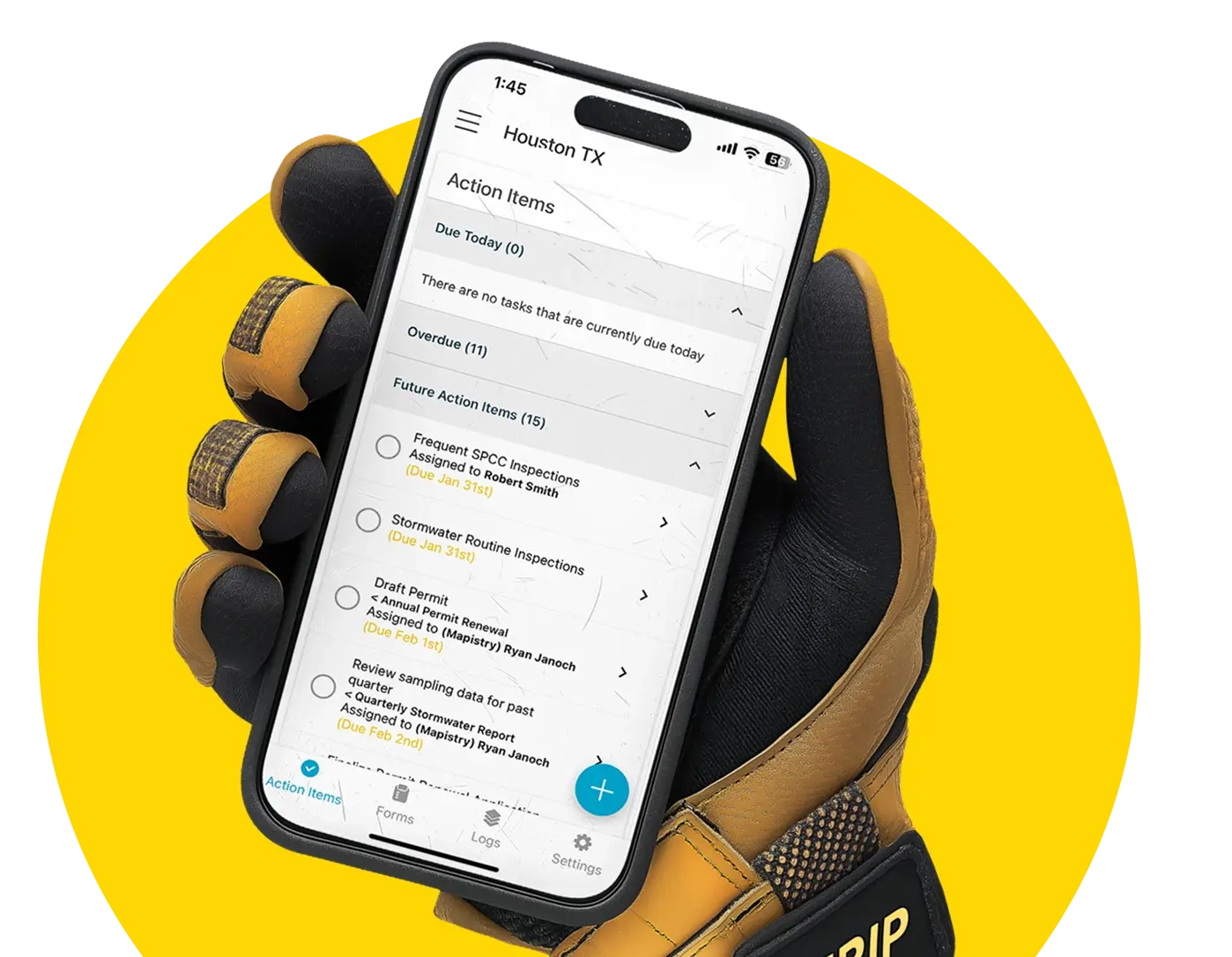Essential Stormwater Sampling Tips and Tricks for Industrial Facilities
Need to refresh on some stormwater sampling tips and tricks with the rainy season approaching? You’re not alone! Being ready to sample is an important part of preparing for the rainy season.
Mitigate Risk
Mapistry wants to give a stormwater shoutout to everyone who spent many hours in the rain collecting samples, calibrating pH meters, and filling out Chain of Custody forms.
Not only are stormwater samples a vital extension of the Clean Water Act – ensuring the health and prosperity of our nation’s waters, stormwater sampling is a key component to a strong compliance program. Taking stormwater samples is so important it mitigates legal risk – pending its done correctly and follows the stipulations outlined in your states permit. Most 60-Day Notices cited a deficient monitoring program, which includes sampling!
Tips and Trick
Whether you are a season sampler or new to the stormwater be sure to follow our tips to you are collecting samples free of contamination and ready to be analyzed by a lab (or your eyes if you have a permit that requires visual observations of grab samples).
1. Use plastic sheeting (almost) all the time.
This is to avoid scraping the floor.
This one works in most types of sample collection and you would be amazed at how this simple step prevents contamination of your sample.
2. Sheet flow is not impossible to sample!
I built the dam thing myself!
So next time I hear someone couldn’t get a sample of sheet flow because there just wasn’t enough to get, you’ll be hearing me tell you how my teammate built this dam flawlessly in just a few minutes!
3. Be patient!
When you collect a sample you should let the bottle fill with flowing water.
As tempting as it is to scrape the bottle in a scooping motion the much preferred method is to hold your lab bottle in place… maybe at the end of the dam you built… and let it fill slowly with running water. Patient young grasshoppers..contaminating your sample is too risky.
4. Be prepared.
This may sound silly, but it’s happened more often than I would like to admit. I ask someone if they grabbed a sample from the most recent storm and they tell me they had did not have bottles on hand. Or they didn’t have the supplies to build an awesome dam. P
reparation for sample collection should never be an after-thought. It’s why Mapistry sends out our automated rain reminders, and why I endlessly remind people that rain is coming. It’s like the Starks say, “Winter is coming” and hey, they’re always right in the end!
I could go on about exactly what needs to be in your sample kit, how to calibrate a pH meter (or how to do that in the field quickly), common errors when collecting samples, or even what a Chain of Custody (CoC) form is and how to understand your lab results, but it looks like we’ve already covered a great deal of that here at Mapistry!


%201%20(2).png)


